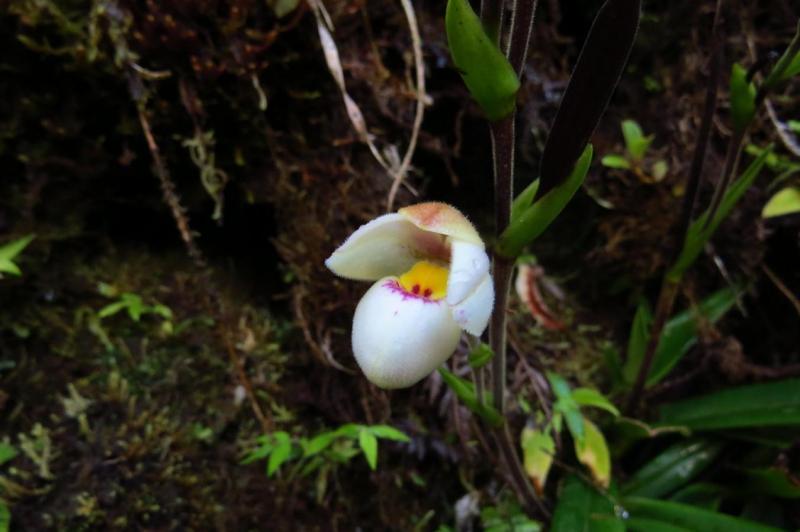Phragmipedium manzurii
Also known as: Manzur's Phragmipedium in the subfamily: Cypripedioideae
Native to: Antioquia - Colombia Departamento del Huila - Colombia
General Information
Manzur's Phragmipedium is a medium sized cool to warm growing lithophytic or terrestrial orchid belonging to the sub family Cypripedioideae native to Colombia. It is named after the Colombian Discoverer of Species.
Plant Description
Grows to 36cm. Each new growth has numerous leathery leaves that grow to 2.3-36cm long
Substrate(s)
- Bark
- Treefern
- Spaghnum Moss
Care Notes
These orchids have a fine root system that can quickly die back if left dry for too long, but also does not like to be kept wet, so water regularly but ensure that the mix is dry before watering.
Climate
Grows at high elevations. Rainfall ranges from 64mm to 196mm per day, heaviest in May and lightest in December. Humidity ranges from 69% to 77%, highest in October and lowest in January. Temperature ranges from 13C to 27C, highest in March (14C to 27C) and lowest in June (13C to 25C).
Watering
These orchids prefer a wet-dry cycle between waterings, they should be watered frequently but only when the moisture is approaching dryness, where the pot feels light and/or the media looks dry. Keep an eye on mounted orchids in warm weather as they may dehydrate quickly.
Fertiliser
Apply liquid based fertiliser per recommended directions. They can benefit from a high phosphate fertiliser leading up to flowering season, followed by a high nitrogen fertiliser when new growth appears, and a balanced fertiliser in other times. These orchids can also tolerate slow release fertiliser applied 1-2 pellets per cup (250ml) of media.
Use balanced fertiliser during Spring and Summer. Be sure to flush out excess fertiliser by running water through the media regularly year round. Apply fertiliser regularly at half strength year round. Use a high Nitrogen fertiliser during Spring and Summer. Use a high Phosphorous fertiliser during Summer.Potting
These plants can be sensitive to repotting though should not require repotting regularly. Repotting should be done when the mix has broken down to the point that it doesn't absorb water or holds onto water for far too long, usually the plant shows a decline in growth as well.
The mix should be free draining, with a blend of 30% inorganic ingredients such as coarse sand, gravel or perlite, mixed in with about 70% organic ingredients such as peat, leaf litter or decomposed bark. Avoid commercial potting mixes as they can vary wildly and may contain "wetting agents" that can hold onto water for loo long, causing rotting and stunted growth.
Repotting is best done annually.





